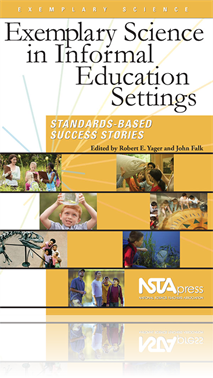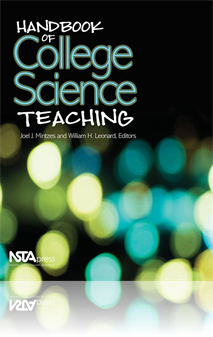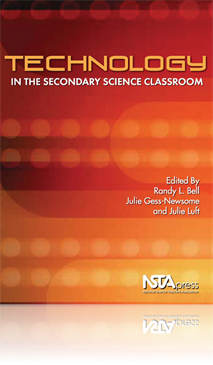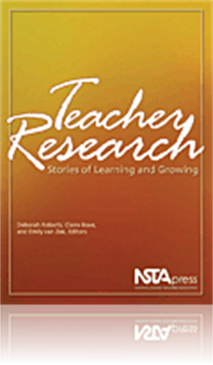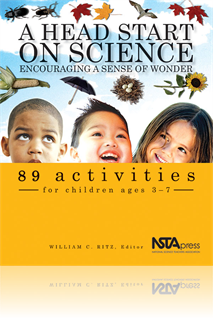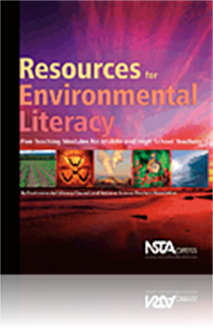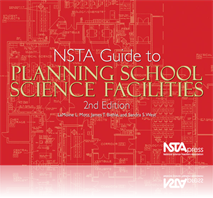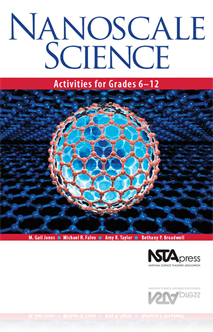All Book Chapters
Book Chapter
Inquiry Is Taking Flight Through Project Butterfly WINGS
Project Butterfly WINGS (Winning Investigative Network for Great Science) is designed to foster adolescents' interest, understanding, and long-term involvement in science, as well as promote positive youth development. Through WINGS, students form a ...
Book Chapter
Curious Scientific Investigators Solve Museum Mysteries
The Children's Museum of Indianapolis has developed the Curious Scientific Investigators (CSI) program, which mixes the best the Museum has to offer with classroom instruction. Therefore, CSI’s vision is to support learning by all members of a clas...
Book Chapter
The Ocean Institute (OI) is dedicated to increasing awareness and understanding of the ocean environment. Its 9-week Weather & Water program is intended to interface the very frontier of ocean science with the needs of fifth-grade teachers and classr...
Book Chapter
Omaha’s Henry Doorly Zoo Academy: Where Science Education Comes to Life!
Omaha's Henry Doorly Zoo has become a leader in both informal and formal science education. Its Zoo Academy is one example of an effective nontraditional teaching model for science education. The academy has become an excellent work-based learning mo...
Book Chapter
Alternative Conceptions: New Directions and Exemplars in College Science Education Research
The most useful science education research for college science teachers is theory based and includes data collected from studies with college students, along with a discussion of the implications for teaching. In this chapter, the authors use example...
Book Chapter
Web-Based Science Inquiry Projects
Web-based inquiry (WBI) learning activities support students as active learners. In these activities, students do not wait for a teacher or someone else to provide an answer. They conduct investigations with meaningful questions about everyday experi...
Book Chapter
Extending Inquiry With Geotechnologies in the Science Classroom
Geotechnologies are tools that allow your students to learn the skills of collecting and analyzing data and creating representations of data with an emphasis on spatial relationships. These processes are critical in nearly every environmental and soc...
Book Chapter
Monica Hartman, Assistant Director for Science in St. Clair County, Michigan, conducted this research while she was the learning specialist in a small suburban district just outside a large Midwestern city. While teaching full time in this district s...
Book Chapter
Science with Attitude: An Informal Science Education Experience
Kansas City's Science City Summer Camp is an eight-week program for children of ages 6-12 from a variety of socioeconomic backgrounds. Drawing on the knowledge that people have diverse learning styles, Science City introduces science concepts each da...
Book Chapter
A Boy with Something on His Mind
Fifteen-year-old Albert Einstein is miserable. He is trying to finish high school in Germany, but he hates the school; it’s a strict, rigid place. To make things worse, his parents have moved to Italy. They think he should stay behind until his sch...
Book Chapter
How Can Playing With a Motion Detector Help Children Learn to Write Clear Sequential Directions?
Kathleen Dillon Hogan is a kindergarten teacher in the Calvert County, Maryland, public schools. When this paper was written, she was a first-grade teacher at Hyattsville Elementary School in Hyattsville, Maryland. Kathleen heard a colleague describe...
Book Chapter
This curriculum, A Head Start on Science, was written to help adults facilitate young children’s learning as they work as partners to explore their world. This complimentary Introduction serves as a navigational tool for early childhood teachers ...
Book Chapter
Introduction: The Environmental Context
The argument for teaching science in the environmental context is based on the reality of the science-environment relationship and on the potential that contextual teaching has for contributing to valuable student learning. At the same time, it must ...
Book Chapter
As stated in “About This Book,” the author isn’t going to take the usual approach to the subject of chemistry. Because virtually all explanations of chemical reactions are based on our current model of atoms and molecules, the first thing to do...
Book Chapter
At the end of the first chapter, you realized, hopefully, that the model of an atom that we have so far (Rutherford’s model of a concentrated positive nucleus with negative charges around it) doesn’t go very far in helping us explain observations...
Book Chapter
In thinking about a title for this chapter, the word periodicity came to mind. I was sure this had some kind of pop culture reference. After discussing this with my wife, we figured I was thinking of synchronicity, which is a reference to music b...
Book Chapter
Let’s Get Together … Yeah, Yeah, Yeah
Ah yes, the theme song from one of the strangest movies of all time—Parent Trap. The original, that is, with Hayley Mills. I was in love with her back then. So naturally, I would choose that phrase to title a chapter on how atoms combine to form mo...
Book Chapter
We now know enough about atoms and how they combine to investigate a number of different chemical reactions. We’ll even be able to represent those reactions with symbols that tell us how many of each kind of atom we begin with and how many of each ...
Book Chapter
The word organic has lots of meanings in everyday life. Organic vegetables are ones grown without pesticides and organic beef comes from cattle that haven’t been given antibiotics. When it comes to chemistry, organic sometimes means something el...
Book Chapter
Advocacy and the Planning Process
Science educators believe that students construct their knowledge of the natural world best in safe, secure, and stimulating learning environments. In order to achieve these goals, teachers, researchers, and planners must become advocates for the sch...
Book Chapter
Current Trends and Future Directions in Science Education: Breaking Down the Walls
The simplest educational concept—and perhaps the most significant—to consider in designing tomorrow’s science programs is inquiry. In keeping with the Standards’ strong emphasis on inquiry-based programs, students increasingly will be explori...
Book Chapter
In order for students to inquire confidently, we must create safe classroom environments. Safety is not just a set of rules but a state of mind, and perhaps, most importantly, it is an attitude and a set of skills that carry over into a students’ d...
Book Chapter
Designing Facilities for the Middle School (6-8)
A high-quality middle school science program requires science classrooms with safe, well-designed laboratory space, and school designers must consider the distance students will have to travel to these classes. Trying to balance high quality science ...
Book Chapter
Designing Facilities for the High School (9-12)
When we participate in a school building program, we create learning environments that will last for many decades. So a major principle of good science facilities planning is to avoid building for a single curricular model. Since continued change in ...
Book Chapter
While everyone in a school community should share responsibility for the “greening” of a school, it is often the science teachers who make the best use of these facilities, basing their lessons on the components of a green school that have been b...
Book Chapter
A periodic table on the ceiling of a chemistry lab/classroom, footprints and fossils of amphibians and animals in a courtyard sidewalk, a 60-foot slinky suspended from the ceiling, and a tessellation pattern in the floor tile extend science learning ...
Book Chapter
We say it often, and the phrase appears in the National Science Education Standards and many state and local documents as well. “All students should have opportunities in science.” But that vision is harder to achieve in practice. It is especiall...
Book Chapter
Imagine metal eyeglass frames that you can roll in a ball, only to watch it uncoil back to its original shape! How can an inanimate object, such as metal, do such a thing? There is a metal alloy that can do just that and it’s one of the many discov...
Book Chapter
Socks that don’t stink, graffiti-resistant paint, windows and sunscreen that reject UV rays… that’s nanotechnology. Students will learn about some of the latest inventions using nanotechnology by exploring actual products of nanotechnology rese...
Book Chapter
Nanotechnology has opened the door for medical applications that work at the molecular level to diagnose, treat, and prevent disease. This investigation models one approach to treating cancer that uses gold nanoshells to locate and destroy cancer. St...
Book Chapter
Building Small: Nano Inventions
Just as cells were discovered with early light microscopes and Saturn’s rings by the first telescopes, the nanoscale world has emerged due to new tools such as the Atomic Force Microscope (AFM). As a result of being able to build atom by atom a who...
Book Chapter
Too Little Privacy: Ethics of Nanotechnology
Advances in nanotechnology allow us to create unique and tiny labels for manufactured materials, create tiny sensors that can detect the presence of specific molecules, and make machines that are so small they can work invisibly. Through a series of ...
Book Chapter
Just how big is a billion? How tiny is a nanometer? Five hands-on inquiry activities are presented that use measurement and calculations to help students visualize one billion. Students develop mental anchors or references to use when conceptualizing...
Book Chapter
Promise or Peril: Nanotechnology and the Environment
Nanoscience research has made great strides in recent years in areas such as nanomaterials and drug delivery. This success has kindled hope for exciting technological breakthroughs in the near future in areas ranging from new cures for cancer therapi...
Book Chapter
How do you get students to understand a number as small as one-billionth? Through a hands-on dilution activity using food coloring, students will learn about parts per billion. A matching card game helps students further understand one-billionth by g...
Book Chapter
Advances in nanotechnology are due in part to the unique structure and properties of carbon nanotubes and buckyballs. These unusual structures are being studied for their potential use as vehicles for drug delivery, to strengthen materials, and as mi...
Book Chapter
Biological Nanomachines: Viruses
Although nanotechnology is a new and emerging field, nanoscale structures are not new. Small molecules such as water, large molecules such as proteins, and larger, more complex objects such as viruses and nanotubes are naturally occurring and exist a...
Book Chapter
What’s In Your Bag? Investigating the Unknown
In nanoscience, like all scientific endeavors, asking the right questions is a vital part of progress. Our ability to observe how things work at the nanoscale is very limited. We need the use of very advanced microscope technologies as well as other ...
Book Chapter
Nanomagnets: Fun with Ferrofluid
Ferrofluid provides an easy opportunity to introduce students to the fascinating properties of the nanoscale. It is essentially a liquid magnet made of nanosized magnetic particles suspended in water or oil. Not only does it demonstrate the strange a...
Book Chapter
Imagine you could build an object that is a billion times smaller than a meter. What would you build? An entire new field has emerged as a result of a new generation of microscopes that allows scientists to investigate the world at the tiniest of sca...



